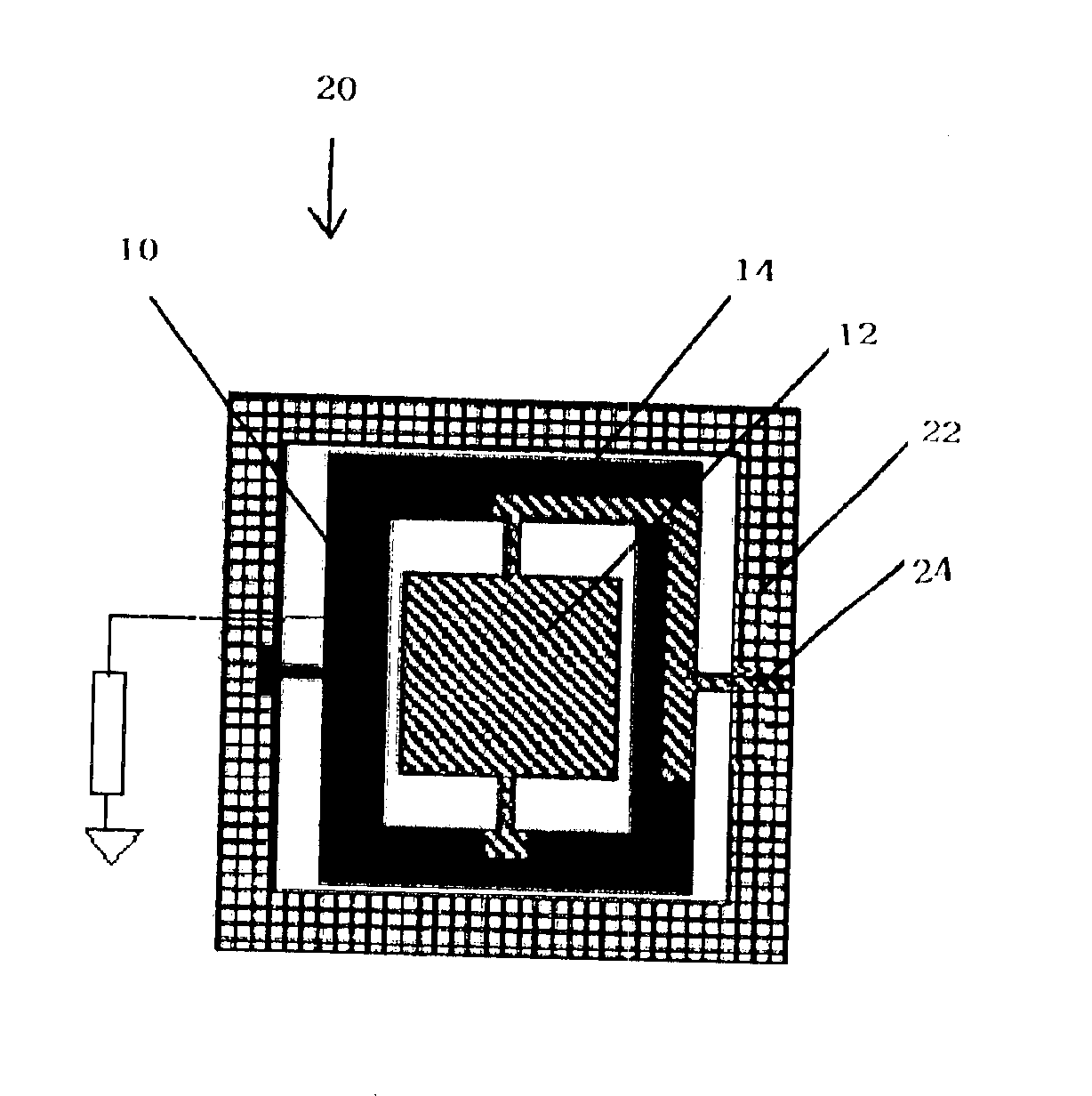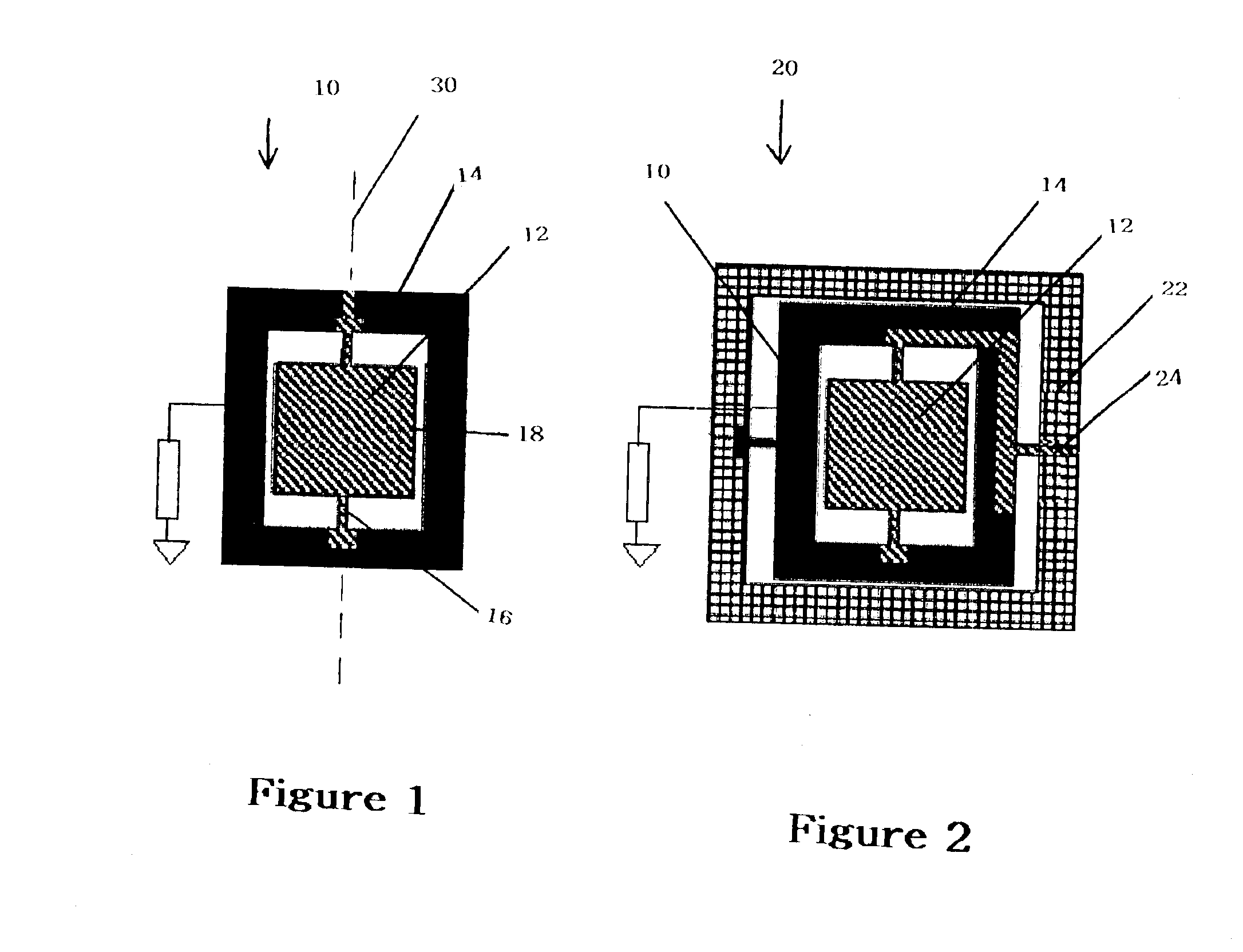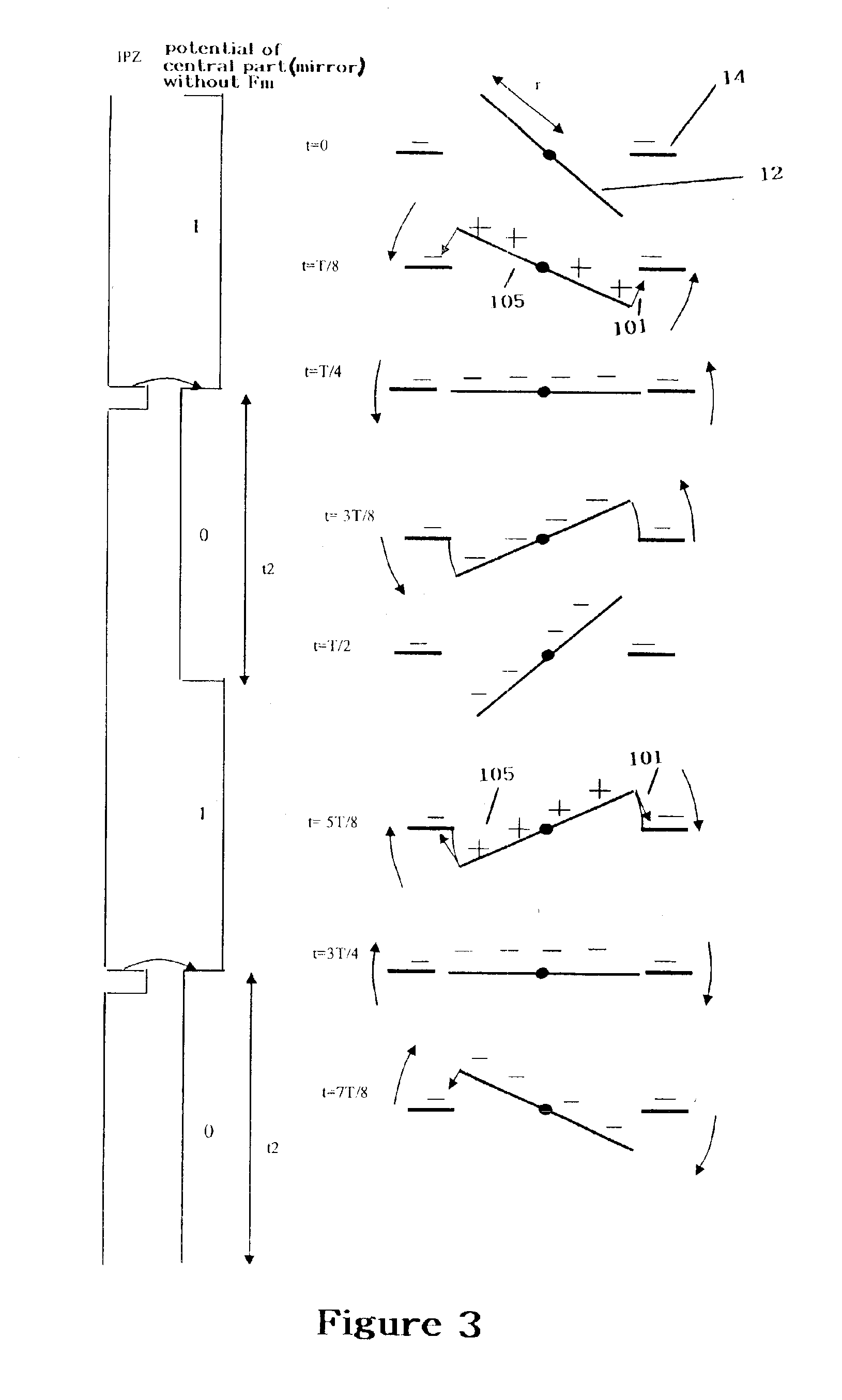Frame grabbing with laser scanner with sweeping by silicon planar electrostatics actuator
a laser scanner and actuator technology, applied in the direction of electrostatic generators/motors, electrostatic motors, instruments, etc., can solve the problems of inability to capture video frames, laser scanners with increased depth of field, and poor depth of field, etc., to achieve low cost, high speed, and small size
- Summary
- Abstract
- Description
- Claims
- Application Information
AI Technical Summary
Benefits of technology
Problems solved by technology
Method used
Image
Examples
Embodiment Construction
The 2D micro actuator of the present invention is based on the technology of the micro planar resonant actuator developed in partnership with Fraunhofer Institute of Dresden within the framework of the project Europeen Mirage. A micro actuator 10 includes a mirror 12 suspended within a framework 14 by two torsion arms 16 defining an axis of oscillation 30. The 2D micro actuator 20 of the present invention includes a 1D micro actuator 10 suspended within a second framework 22 by two torsion bars 24 and two pairs of orthogonal additional electrodes. The 2D micro actuator 20 thus obtained is a monolithic part of silicon which can be manufactured according to standard processes used for semi conductors CMOS. Several thousands of micro actuators can be carried out in parallel on same the wafer. The geometry out of comb of the electrodes allows one to obtain angles of oscillation up to 40μ with less than 20 V, for a frequency of oscillation of 140 hertz to 20 kHz. The frame 14 of the micr...
PUM
 Login to View More
Login to View More Abstract
Description
Claims
Application Information
 Login to View More
Login to View More - R&D
- Intellectual Property
- Life Sciences
- Materials
- Tech Scout
- Unparalleled Data Quality
- Higher Quality Content
- 60% Fewer Hallucinations
Browse by: Latest US Patents, China's latest patents, Technical Efficacy Thesaurus, Application Domain, Technology Topic, Popular Technical Reports.
© 2025 PatSnap. All rights reserved.Legal|Privacy policy|Modern Slavery Act Transparency Statement|Sitemap|About US| Contact US: help@patsnap.com



